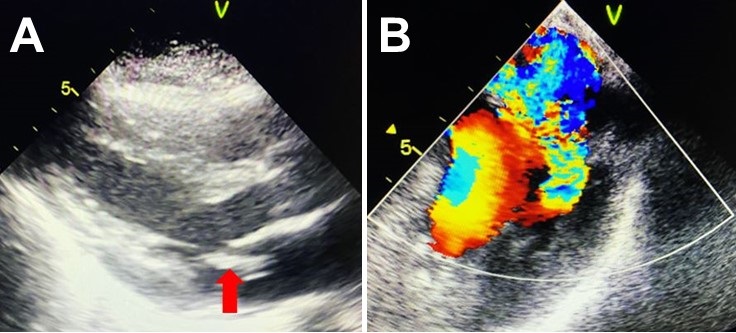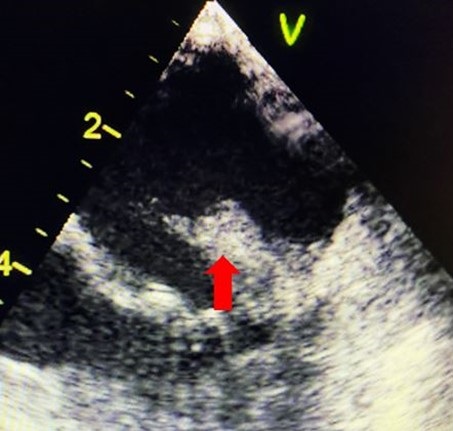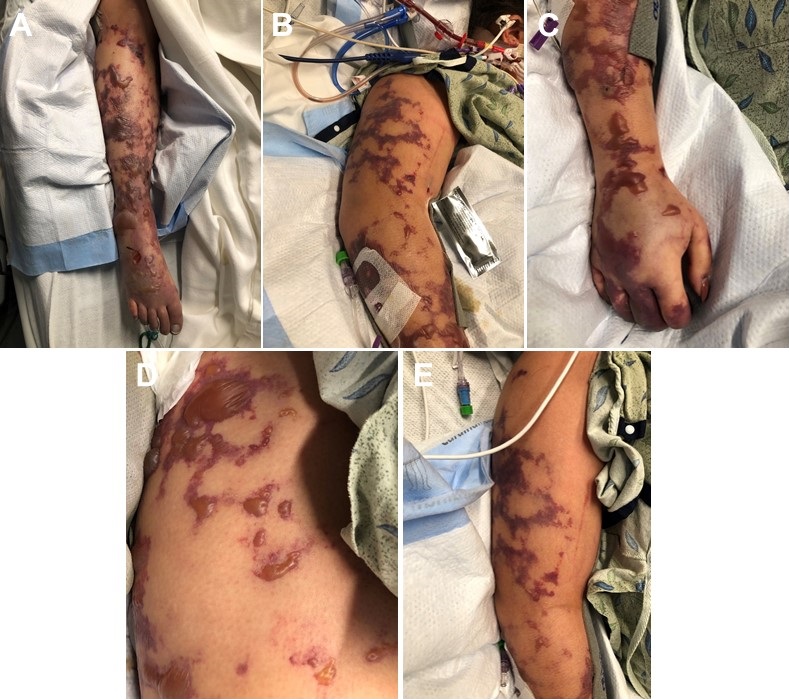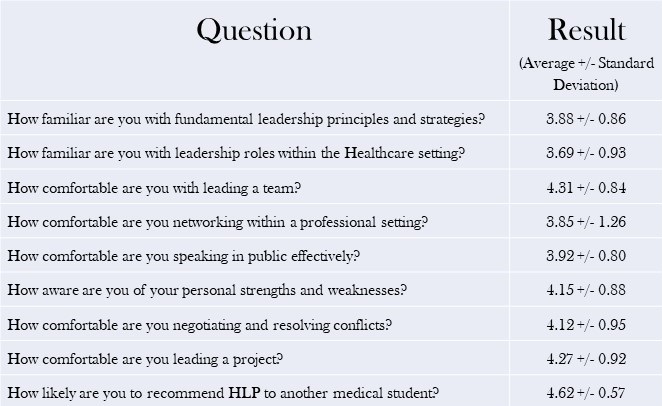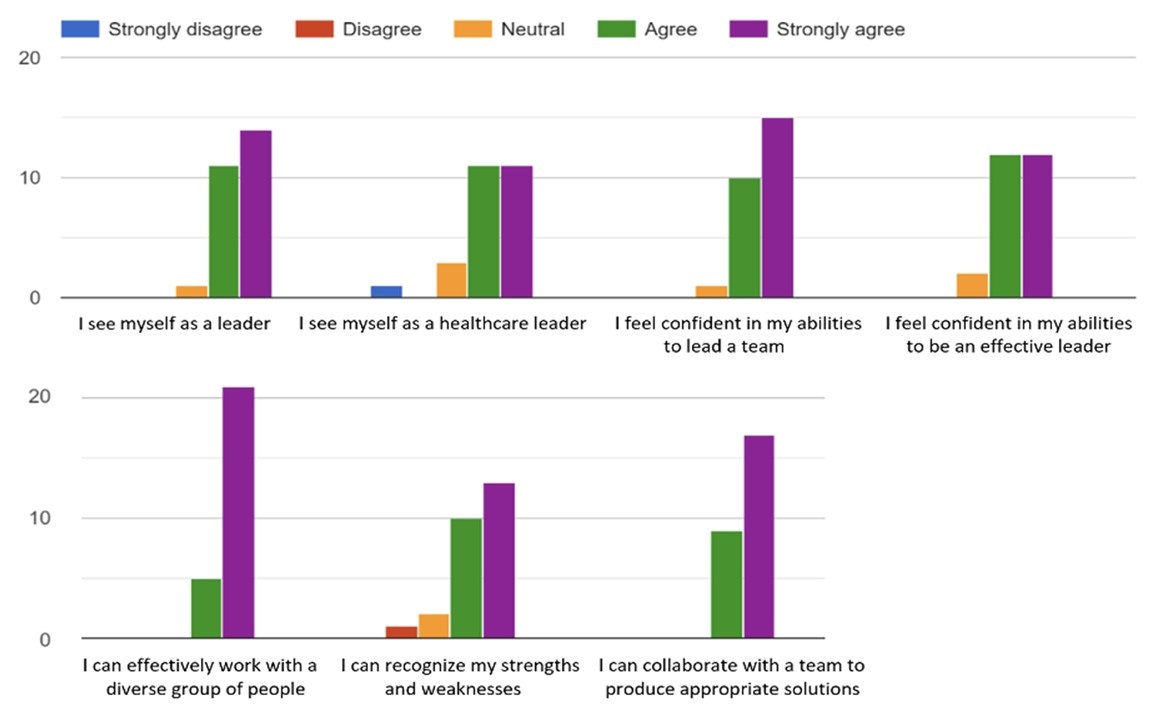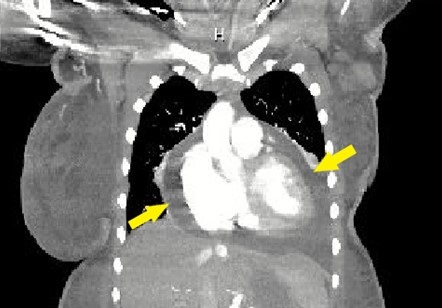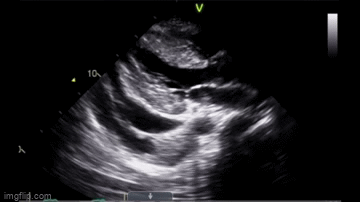Effect Of Exogenous Melatonin on the Incidence of Delirium and Its Association with Severity of Illness in Postoperative Surgical ICU Patients
 Monday, July 25, 2022 at 8:00AM
Monday, July 25, 2022 at 8:00AM Dr. Kriti Gupta, MD
Dr. Vipin K. Singh, MD
Dr. Zia Arshad, MD*
Dr. G. P. Singh, MD
*Corresponding Author
Department of Anaesthesiology
King George’s Medical University
Lucknow UP, India 226003
Abstract
Background: Delirium is common in critically ill intensive care unit (ICU) patients and has been documented in up to 87 percent of patients. Sleep deprivation and delirium have been associated. Alteration of melatonin production has been associated with delirium. Melatonin acts via melatonin receptors present in the suprachiasmatic nuclei (SCN) and promotes sleep by attenuating the wake-promoting signal from the SCN.
Objective: To determine the relationship between exogenous melatonin and the incidence of delirium and its association of with severity of illness, measured in term of APACHE II, procalcitonin level at the time of admission and daily SOFA score.
Patients and Methods:
Design: Randomised placebo-control study.
Setting: the study was conducted in critical care setting in a tertiary level ICU.
Participants: Postoperative patients age between 20-60 years who are going to be ventilated more than 48 hours without any contraindication to enteral medications.
Interventions: Study group received melatonin 5 mg through the enteral route.
Main outcome measures: To determine the effect of exogenous melatonin on the incidence of delirium in postoperative patients who require mechanical ventilation for more than 24 hours. The secondary outcome measures are procalcitonin (PCT) value at admission and disease severity scores like APACHE II and SOFA.
Results: No statistically significant difference was found in admission incidence of delirium or procalcitonin. Age was higher in those patients that developed delirium (p < 0.05).
Conclusions: Although the incidence of delirium is not affected by exogenous melatonin or higher APACHE scores, it had a significant correlation with higher procalcitonin, that in turn indicated an association with delirium and sepsis. It was found that there is increased risk of developing delirium with increasing age.
Key words: delirium, intensive care unit, sedation, melatonin, APACHE II, procalcitonin,
Introduction
Delirium is defined as “A disturbance in attention (i.e., reduced ability to direct, focus, sustain and shift attention) and awareness (reduced orientation to the environment)” (1). Delirium is extremely prevalent in hospitalized patients; it affects 10%–24% of the adult general medicine population and 37–46% of the general surgical population. Delirium has been documented in up to 87 percent of patients in the intensive care unit (ICU) (2). Multiple etiologies have been hypothesized to be causing delirium. Some of these are central cholinergic deficiency, reduced GABA activity, abnormal serotonin and melatonin pathways, cerebral hypo perfusion and neuronal damage due to inflammation (3,4). Acute Physiology and Chronic Health Evaluation II score (APACHE II) and the Sequential Organ Failure Score (SOFA) score have been found to aid in the prediction of delirium in the critically ill.
It has been demonstrated that pattern of secretion and concentration of melatonin are altered in critically ill patients (5). Melatonin release from the pineal gland is also decreased due to surgical stress and hence its potential use in postoperative delirium (6). Sepsis-associated delirium is a cerebral manifestation commonly occurring in patients with other infection-related organ dysfunctions and is caused by a combination of neuroinflammation and disturbances in cerebral perfusion (7). Procalcitonin is a helpful biomarker for early diagnosis of sepsis in critically ill patients (8).
Melatonin acts via melatonin receptors present in the suprachiasmatic nuclei (SCN) and promotes sleep by attenuating the wake-promoting signal from the SCN (9,10). Bioavailability of melatonin is excellent as demonstrated by supraphysiological level after exogenous supplementation (11).
The Confusion Assessment Method (CAM) is a diagnostic instrument used to screen and diagnose delirium in ICU. The CAM diagnostic algorithm is comprised of four components: (1) an acute (4) an altered level of consciousness. The diagnosis of delirium is based on the presence of both component 1 and 2, and either 3 and 4 (12).
Objective
The primary objective of the study was to determine the efficacy of exogenous melatonin in preventing delirium in postoperative patients admitted in ICU, as well as to compare the outcome by comparing the incidence of delirium and length of ICU stay in two groups. The secondary objective is to determine the association of delirium with severity of illness, which was measured in term of APACHE II and Procalcitonin level at the time of admission and daily SOFA scoring.
Methods
We performed a randomized, placebo-controlled study on postoperative patients admitted in our 20-bed tertiary level ICU. Inclusion criteria included adult postoperative patients requiring mechanical ventilation for more than 48 hours who were able to receive medication by the enteral route. Exclusion criteria included unwillingness to participate; sensitivity or history of allergic reaction to melatonin supplements; pregnancy; paralytic ileus; patients not expected to survive >48 hours; preexisting pathologies including cognitive dysfunction, dementia, psychiatric disorders or sleep disorders; history of head injury, substance abuse or withdrawal; and patients with hearing impairments.
Patients were randomized into two groups of 70 patients each with a sealed envelope randomization method. The study group received melatonin 5 mg via the enteral route at 8 pm every day and the control group received placebo (1 gm lactose powder) through a nasogastric tube until ICU discharge/transfer. APACHE II and procalcitonin (PCT) levels were recorded at admission, and SOFA scores were calculated daily. Delirium preventive measures including decreased light, noise, and regular patient orientation were applied uniformly in both groups. On the day of discharge/transfer the patients were evaluated using the CAM-ICU (Confusion Assessment Method) scale. The patients were categorized as “Delirious” or “Not Delirious” on the basis of the results from the CAM-ICU scale (12). Results were analyzed by comparing the incidence of delirium, length of ICU stay, APACHE II, SOFA Score and PCT value at the time of admission.
Results
A total of 140 adult post-operative patients transferred to the ICU who were ventilated more than 48 hours were evaluated. Table 1 contains the demographics of the study population.
Table 1: Between Group Comparison of Demographic Profile

Mean age of patients enrolled in the study was 38.70±11.56 years. Difference in age of patients in Group A (38.46±11.87) and Group B (38.94±11.33) was not statistically significant.
APACHE II scores did not differ at admission (Table 2).
Table 2: Between Group Comparison of APACHE II Score

Procalcitonin levels did not differ at admission (Table 3).
Table 3: Between Group Comparison of Procalcitonin (ng/ml)

Range of procalcitonin levels of patients of both the groups was 0.2-25.60 ng/ml. Though mean procalcitonin levels of patients of Group B (5.76±6.37 ng/ml) were found to be higher than that of Group A (4.81±6.60 ng/ml) yet this difference was not found to be significant statistically.
Duration of ICU stay was 4 to 27 days. Though mean ICU stay of patients of Group A (9.29±4.57 days) was higher than that of Group B this difference was not found to be significant statistically.
SOFA score of 56 patients of Group A and 55 patients of Group B could be assessed. Median SOFA score of patients of both the groups was 2.00, mean SOFA score of patients of Group A was 2.70±2.20 (range 0-9) while that of Group B was 2.53±1.63. On comparing SOFA score of patients of above two groups, difference was not found to be significant statistically.
CAM ICU score of 111 patients could be assessed. The majority of overall (68.5%) as well as Group A (76.8%) and Group B (60.0%) had negative CAM ICU scores. Though a higher proportion of Group B as compared to Group A had a positive CAM ICU score (40.0% vs. 23.2%), this difference was not found to be significant statistically.
There was no significant difference in the mortality of non-delirious patients.
Patients with delirium as compared to non-delirium had significantly higher values of APACHE-II (20.57±6.26 vs. 18.42±7.14) and significantly higher procalcitonin levels (5.84±6.25 vs. 3.42±6.57 ng/ml).
Table 4: Association of Delirium with Demographic Profile

Patients with delirium were found to be older as compared to non-delirium (41.57±9.99 vs. 35.87±11.81). This difference was found to be significant statistically. Proportion of females was higher among delirious as compared to non-delirious patients (54.3% vs. 47.4%), but this difference was not found to be significant statistically.
Delirium was less prevalent in Group A (16.6 percent) than Group B (31.4 percent), although the difference was not statistically significant. Melatonin administration did not significantly affect any of the other outcomes (p>0.05, all comparisons).
Discussion
Delirium is prevalent in all spheres of hospitalization, medical and surgical patients, more prominently in patients admitted to intensive care units. Owing to its multifactorial etiopathogenesis, multiple pharmacological and non-pharmacological methods have been described in various literatures for prevention and treatment of delirium.
Delirium is associated with various complications which may result in unfavorable outcomes. These complications may vary from minor complications like self-extubation, removal of catheters, weaning failure, increase length of ICU stay to increased mortality. Ely and coworkers(13) studied 275 mechanically ventilated medical ICU patients and determined that delirium was associated with a threefold increase in risk for 6-month mortality after adjusting for age, severity of illness, co-morbidities, coma, and exposure to psychoactive medications. The commonest factors significantly associated with delirium are dementia, increased age, co-morbidities, severity of illness, infection, decreased day to day activities, immobilisation, sensory disturbance, urinary catheterization, urea and electrolyte imbalance and malnutrition (14).
Frisk et al. (15) in 2004 conducted a study to assess the biochemical indicators of circadian rhythm of patients admitted in ICUs and found altered secretion patterns and reduction in the urinary metabolite of melatonin, 6-SMT (6-sulphatoxymelatonin). This indicated the possible disruption of this neurohormone in patients admitted in intensive care units. Andersen et al. (16) concluded that exogenous melatonin could be utilized to alleviate preoperative anxiety in surgical and critical care patients and more importantly, to decrease the emergence of delirium in the early postoperative period. In our study, 140 adult post-operative patients were studied to establish the preventive role of melatonin in delirium. Aghakouchakzadeh et al. (17) in 2017 conducted a comprehensive review to determine the effect of melatonin on delirium; they concluded that because exogenous melatonin can improve circadian rhythm and prevent delirium, melatonin supplementation could improve or manage delirium in the intensive care unit. Similarly, Yang et al. (18) in their review had found substantial preventative effects of melatonin on delirium .This investigation established a reason for the practice recommendations to recommend melatonergic medications for delirium prevention.
Out of 140 patients that we studied, 29 patients died during the trial, 35 were diagnosed with delirium and 76 had no delirium. Delirium was less prevalent in Group A (16.6 percent) than Group B (31.4 percent), although the difference was not statistically significant. This reduction is similar to the results found by Nishikimi et al. (19) in who found the melatonin agonist to be related to a trend toward shorter ICU stays, as well as significant reductions in the occurrence and duration of delirium in patients admitted to the ICU.
Sepsis and inflammation are important etiologies of delirium. Inflammatory biomarkers (procalcitonin and erythrocyte sedimentation rate) can be predictive of acute brain dysfunction and delirium. Hamza et al. (20) procalcitonin was significantly higher in their delirious group in univariant (0.9±0.6 vs. 0.4±0.4ng/mL, P<0.001) and multivariate analysis (OR= 35.59, CI (7.73- 163.76)). Similarly, McGrane S et al. (21) conducted a study in 87 non-intensive care unit (ICU) cohorts and found that higher levels of procalcitonin were associated with fewer delirium/coma-free days (odds ratio (OR), 0.5; 95% confidence interval (CI), 0.3 to 1.0; P = 0.04). Our study showed similar results with significantly higher procalcitonin levels in patients with delirium than those without delirium (5.84±6.25 vs. 3.42±6.57 ng/ml).
The Acute Physiology and Chronic Health Evaluation II score (APACHE II) provides a classification of severity of disease and is particularly used in the ICU to predict mortality. In our study, APACHE II scores were calculated for each patient at their admission in the ICU. The range of APACHE-II score of patients enrolled was 6 to 38. Patients of Group A and Group B had comparable APACHE-II Score (21.07±8.17 vs. 21.84±7.81). Patients with delirium as compared to non-delirium had higher values APACHE-II scores (20.57±6.26 vs. 18.42±7.14). This was similar to the findings of Hamza SA et. al.(17), who, in their observational study of 90 patients, found not only have higher APACHE scores but also that the APACHE-II scores had significantly high diagnostic performance in discrimination of delirium (AUC = 0.877, P= <0.001).
Another clinically important score is the Sequential Organ Failure Score (SOFA) score used to sequentially assess the severity of organ dysfunction in critically ill patient , is an objective score that calculates the number and the severity of organ dysfunction in six organ systems (respiratory, coagulation , liver, cardiovascular, renal, and neurologic). In a prospective cohort study on 400 consecutive patients admitted to the ICU Rahimi-Bashar et al. (22) found the SOFA scores were significantly higher in those with delirium (7.37 ± 1.17) than those without delirium (4.93 ± 1.70). Similarly in our study, SOFA score of patients with delirium (4.49±1.63) was found to be significantly higher than that of non-delirium (1.75±1.37). Hence the elevated SOFA and APACHEII scores in the delirium can assist in identifying at-risk patients for delirium and hence allow interventions to improve outcomes.
Aging is often associated with a disruption of the normal circadian cycle, which can also result in delirium. Thus, melatonin and its agonist may have a more significant influence on delirium in the elderly than in the young, Abbasi et al. (23) discovered that delirium is uncommon in a relatively young group. Thus, the relatively young age of our study sample and the enhancement of ICU care (such as decreased light, noise, and regular patient orientation) are the primary reasons for our study's low prevalence of delirium. Additionally, we found patients with delirium were older as compared to non-delirium (41.57±9.99 vs. 35.87±11.81).
As previously stated, the potential benefit of exogenous melatonin supplementation in reducing delirium incidence has been evaluated in non-ICU settings as well. While both the Sultan (24) and Jonghe (25) investigations examined whether melatonin may help postoperative patients avoid delirium, the de Jonghe study employed six times the amount of melatonin used in the Sultan study (3 mg versus 0.5 mg, respectively).
We suggest that individuals at risk of developing delirium, such as the elderly, should be investigated in future researches. Also, further studies are required comparing subgroups of medical, surgical, and trauma patients to determine which patients will benefit most from exogenous melatonin administration. Because plasma and urinary levels of melatonin are directly related to its concentration in the central nervous system, we also recommend monitoring melatonin levels in plasma or urine during the study and for follow-up to ascertain which subgroup of patients benefited most from exogenous melatonin supplementation to prevent delirium.
Conclusion
The study demonstrates there is decreased incidence of delirium in the patients who received exogenous melatonin, although this difference was statistically not significant (p=0.057). There was a statistically significant association of age with development of delirium (p=0.015). It has also been observed that the higher procalcitonin levels are associated with increased incidence of delirium (<0.001).
References
- American Psychiatric Association A. Diagnostic and statistical manual of mental disorders. Washington, DC: American Psychiatric Association; 1980 Jan 1.
- Maldonado JR. Delirium in the acute care setting: characteristics, diagnosis and treatment. Crit Care Clin. 2008 Oct;24(4):657-722, vii. [CrossRef] [PubMed]
- Hshieh TT, Fong TG, Marcantonio ER, Inouye SK. Cholinergic deficiency hypothesis in delirium: a synthesis of current evidence. J Gerontol A Biol Sci Med Sci. 2008 Jul;63(7):764-72. [CrossRef] [PubMed]
- Maldonado JR. Pathoetiological model of delirium: a comprehensive understanding of the neurobiology of delirium and an evidence-based approach to prevention and treatment. Crit Care Clin. 2008 Oct;24(4):789-856, ix. [CrossRef] [PubMed]
- Olofsson K, Alling C, Lundberg D, Malmros C. Abolished circadian rhythm of melatonin secretion in sedated and artificially ventilated intensive care patients. Acta Anaesthesiol Scand. 2004 Jul;48(6):679-84. [CrossRef] [PubMed]
- Can MG, Ulugöl H, Güneş I, Aksu U, Tosun M, Karduz G, Vardar K, Toraman F. Effects of Alprazolam and Melatonin Used for Premedication on Oxidative Stress, Glicocalyx Integrity and Neurocognitive Functions. Turk J Anaesthesiol Reanim. 2018 Jun;46(3):233-237. [CrossRef] [PubMed]
- Atterton B, Paulino MC, Povoa P, Martin-Loeches I. Sepsis Associated Delirium. Medicina (Kaunas). 2020 May 18;56(5):240. [CrossRef] [PubMed]
- Wacker C, Prkno A, Brunkhorst FM, Schlattmann P. Procalcitonin as a diagnostic marker for sepsis: a systematic review and meta-analysis. Lancet Infect Dis. 2013 May;13(5):426-35. [CrossRef] [PubMed]
- Sack RL, Hughes RJ, Edgar DM, Lewy AJ. Sleep-promoting effects of melatonin: at what dose, in whom, under what conditions, and by what mechanisms? Sleep. 1997 Oct;20(10):908-15. [CrossRef] [PubMed]
- Cajochen C, Kräuchi K, Wirz-Justice A. Role of melatonin in the regulation of human circadian rhythms and sleep. J Neuroendocrinol. 2003 Apr;15(4):432-7. [CrossRef] [PubMed]
- Bellapart J, Appadurai V, Lassig-Smith M, Stuart J, Zappala C, Boots R. Effect of Exogenous Melatonin Administration in Critically Ill Patients on Delirium and Sleep: A Randomized Controlled Trial. Crit Care Res Pract. 2020 Sep 23;2020:3951828. [CrossRef] [PubMed]
- Shi Q, Warren L, Saposnik G, Macdermid JC. Confusion assessment method: a systematic review and meta-analysis of diagnostic accuracy. Neuropsychiatr Dis Treat. 2013;9:1359-70. [CrossRef] [PubMed]
- Ely EW, Shintani A, Truman B, Speroff T, Gordon SM, Harrell FE Jr, Inouye SK, Bernard GR, Dittus RS. Delirium as a predictor of mortality in mechanically ventilated patients in the intensive care unit. JAMA. 2004 Apr 14;291(14):1753-62. [CrossRef] [PubMed]
- Ahmed S, Leurent B, Sampson EL. Risk factors for incident delirium among older people in acute hospital medical units: a systematic review and meta-analysis. Age Ageing. 2014 May;43(3):326-33. [CrossRef] [PubMed]
- Frisk U, Olsson J, Nylén P, Hahn RG. Low melatonin excretion during mechanical ventilation in the intensive care unit. Clin Sci (Lond). 2004 Jul;107(1):47-53. [CrossRef] [PubMed]
- Andersen LP, Gögenur I, Rosenberg J, Reiter RJ. The Safety of Melatonin in Humans. Clin Drug Investig. 2016 Mar;36(3):169-75. [CrossRef] [PubMed]
- Aghakouchakzadeh M, Izadpanah M, Soltani F, Dianatkhah M. Are Melatonin and its Agonist the Natural Solution for Prevention of Delirium in Critically Ill Patients? A Review of Current Studies. Jundishapur Journal of Natural Pharmaceutical Products. 2017 Aug 31;12(3 (Supp)). [CrossRef]
- Yang CP, Tseng PT, Pei-Chen Chang J, Su H, Satyanarayanan SK, Su KP. Melatonergic agents in the prevention of delirium: A network meta-analysis of randomized controlled trials. Sleep Med Rev. 2020 Apr;50:101235. [CrossRef] [PubMed]
- Nishikimi M, Numaguchi A, Takahashi K, Miyagawa Y, Matsui K, Higashi M, Makishi G, Matsui S, Matsuda N. Effect of Administration of Ramelteon, a Melatonin Receptor Agonist, on the Duration of Stay in the ICU: A Single-Center Randomized Placebo-Controlled Trial. Crit Care Med. 2018 Jul;46(7):1099-1105. [CrossRef] [PubMed]
- Hamza SA, Ali SH, ElMashad NB, Elsobki HS. Is there a Role for Procalcitonin in Delirium. Gerontol Geriatr Res. 2016;2(2):1010. [CrossRef]
- McGrane S, Girard TD, Thompson JL, Shintani AK, Woodworth A, Ely EW, Pandharipande PP. Procalcitonin and C-reactive protein levels at admission as predictors of duration of acute brain dysfunction in critically ill patients. Crit Care. 2011;15(2):R78. [CrossRef] [PubMed]
- Rahimi-Bashar F, Abolhasani G, Manouchehrian N, Jiryaee N, Vahedian-Azimi A, Sahebkar A. Incidence and Risk Factors of Delirium in the Intensive Care Unit: A Prospective Cohort. Biomed Res Int. 2021 Jan 8;2021:6219678. [CrossRef] [PubMed]
- Abbasi S, Farsaei S, Ghasemi D, Mansourian M. Potential Role of Exogenous Melatonin Supplement in Delirium Prevention in Critically Ill Patients: A Double-Blind Randomized Pilot Study. Iran J Pharm Res. 2018 Fall;17(4):1571-1580. [PubMed]
- Sultan SS. Assessment of role of perioperative melatonin in prevention and treatment of postoperative delirium after hip arthroplasty under spinal anesthesia in the elderly. Saudi J Anaesth. 2010 Sep;4(3):169-73. [CrossRef] [PubMed]
- de Jonghe A, van Munster BC, Goslings JC, Kloen P, van Rees C, Wolvius R, van Velde R, Levi M, de Haan RJ, de Rooij SE; Amsterdam Delirium Study Group. Effect of melatonin on incidence of delirium among patients with hip fracture: a multicentre, double-blind randomized controlled trial. CMAJ. 2014 Oct 7;186(14):E547-56. [CrossRef] [PubMed]
Cite as: Gupta K, Singh VK, Arshad Z, Singh GP. Effect Of Exogenous Melatonin on the Incidence of Delirium and Its Association with Severity of Illness in Postoperative Surgical ICU Patients. Southwest J Pulm Crit Care Sleep. 2022;25(2):7-14. doi: https://doi.org/10.13175/swjpcc030-22 PDF

